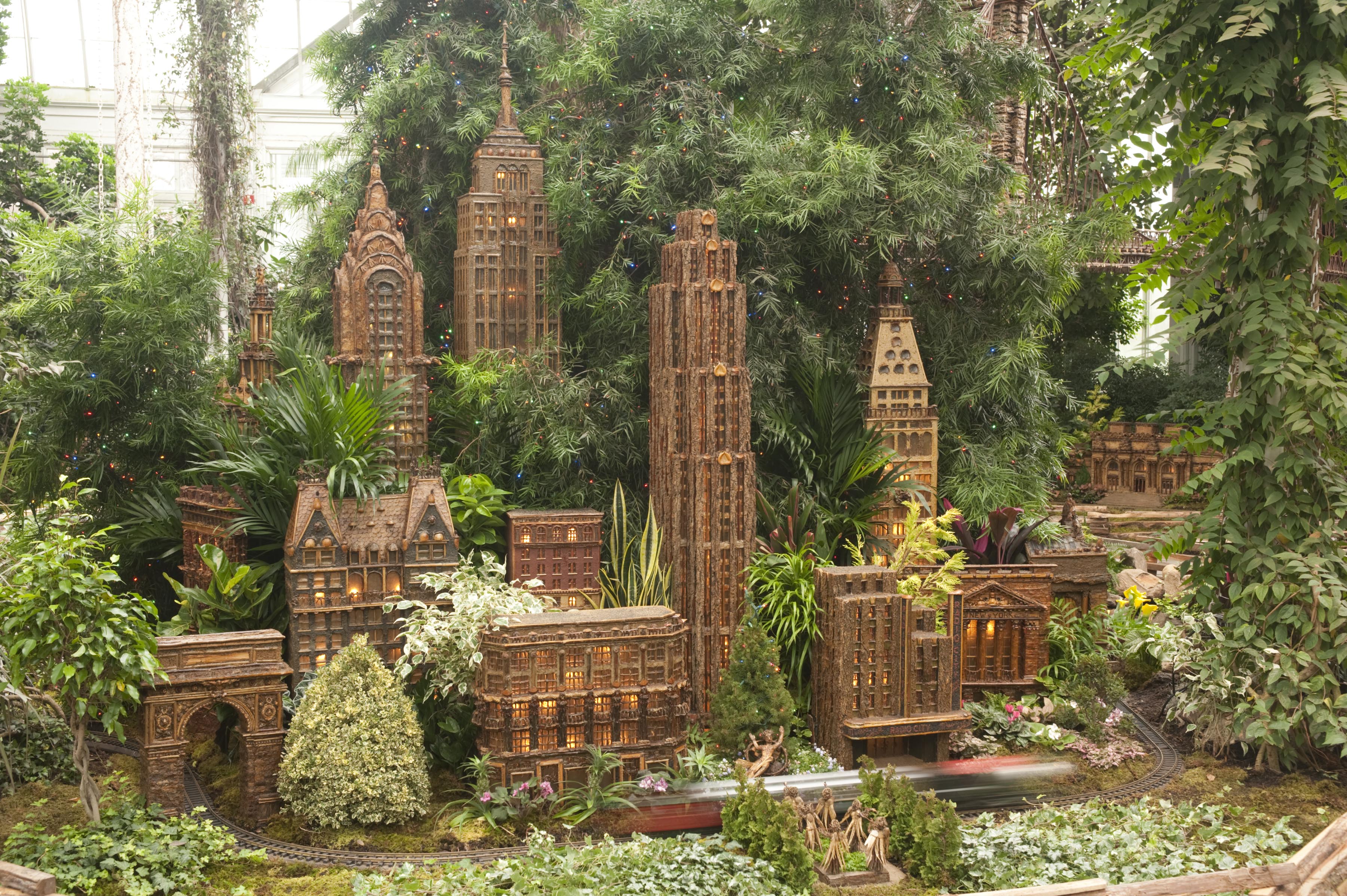The Botanical Garden’s Holiday Train Show Will Put Some Jingle in Your Step
With the unnaturally warm weather we’ve been experiencing here on the East Coast, it’s hard to get into the holiday spirit. But a trip to the New York Botanical Garden’s Holiday Train Show may just be the ticket to put you in a merry mood.
I visited the exhibition the weekend after Thanksgiving, on a day when a jacket was not needed, and the sun was shining. It was hard to believe that it was almost December and that I was going to write about a holiday display, but I was glad it wasn’t cold for my stroll around the garden!
The Holiday Train Show is held in the Enid A. Haupt Conservatory, not far from the garden’s entrance. The line was long, but it moved quickly, and there were small signs with interesting train facts along the crowd control stanchions, which helped occupy me during the wait.
I found that the display was more about the model buildings than the trains. While there are impressive bridges overhead that the trains travel across, visitors seem to examine the replicas of New York buildings with more interest. This must be because of the intricacy with which the buildings are detailed, as well as the materials used for the models.
In the exhibition, creator, Paul Busse, with the help of his team of 20, tie nature with architecture. The models are garnished with plant material, from magnolia leaf roofs to acorn chimney tops. Each replica, even the model Empire State Building, resembles an urban log cabin.
My personal favorite was the reproduction of Washington Irving’s home. Pink orchids surround the piece, complementing its mustard-yellow hue. One orchid branch wraps vine-like around the house’s entrance. Next to the scaled-down buildings, small plants and flowers become trees and bushes in a beautifully manicured front-lawn landscape. Mosses become lush carpets of grass. All that is missing are tiny city-dwellers picnicking or waiting for the trains.
According to Karen Daubmann, the Director of Exhibitions at the New York Botanical Garden, some of the visitors’ favorites include the reproduction of the now demolished Yankee Stadium, as well as Penn Station. Viewers can take a peek at the baseball diamond inside the stadium and at the trains below the train station.
The first piece in the exhibit is JFK’s Trans World Airlines Flight Center. This is jarring because the roof is made, fittingly enough, out of a huge, browning tin roof tree leaf. Seeing a leaf that size in nature would be interesting, but witnessing nature’s glory being used in such an ingenious way is a sight all its own.
I met Yvonne Stubbs, a Kentucky native and first-timer at the exhibition, who seemed intent on photographing the flora growing around the exhibit.
“[The exhibition] gets you to focus on nature, something that we often just glide by,” she shared.
(Article continued on next page)

